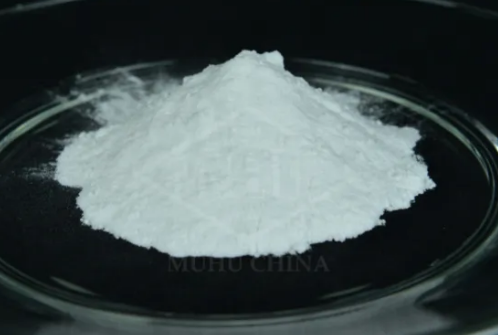
Retarder for Plaster: Extending Workability and Improving Quality
In construction and building projects, gypsum-based materials such as plaster and drywall are widely used due to their ease of application and smooth finish. However, one of the challenges in working with plaster is its rapid setting time, which can limit working efficiency and precision. A retarder for plaster provides a practical solution by slowing down the setting process, allowing more time for manipulation and finishing.
Retarder for plaster functions by chemically interfering with the hydration of gypsum, delaying its hardening without compromising strength or final quality. This makes it ideal for complex plastering work, decorative moldings, or large-scale wall applications where extended workability is essential. By using a retarder for plaster, contractors can achieve smoother surfaces, more intricate designs, and improved adhesion while minimizing errors or rework.
In addition to improving workability, modern retarder for plaster formulations often enhance water resistance, making plaster more suitable for humid environments. By combining retarders with water-resistant gypsum products, projects such as bathrooms, kitchens, and exterior walls benefit from longer durability and reduced maintenance.
USG Plaster Retarder: Features and Applications
USG plaster retarder is a widely recognized product designed to extend the setting time of gypsum plaster. It is particularly popular for professional contractors and large construction projects where precision and timing are critical. USG plaster retarder is formulated to maintain workability for extended periods, enabling workers to apply, shape, and smooth plaster with greater accuracy.
One of the advantages of USG plaster retarder is its consistency in performance across various types of plaster mixes. Whether using pre-mixed plaster, standard gypsum, or specialized decorative compounds, USG plaster retarder ensures predictable and controlled setting times. This makes it highly suitable for applications such as wall finishing, ceiling installations, and decorative moldings.
In addition, USG plaster retarder can be combined with water-resistant gypsum products or sealants to enhance moisture protection. By integrating these elements, construction professionals can achieve durable, long-lasting results without compromising the ease of application or visual quality of the plaster surface.
Extra Time Plaster Retarder Screwfix: Practical Benefits
For contractors and DIY enthusiasts, extra time plaster retarder Screwfix provides an accessible solution to extend plaster workability. This product allows more time for plaster application, reducing the pressure of rapid setting and minimizing the risk of cracks or uneven finishes.
Extra time plaster retarder Screwfix works by slowing the chemical reaction in gypsum, giving users additional time to apply, level, and texture surfaces. It is especially useful in larger projects where multiple workers need to coordinate efforts or in decorative plastering tasks that require meticulous detail.
The product’s ease of use and reliable performance make extra time plaster retarder Screwfix suitable for both professionals and hobbyists. By extending working time, it allows better finishing quality, reduced waste, and improved project efficiency. It can also be combined with water-resistant gypsum or sealants to improve durability in moisture-prone areas.
Plastering Retarder: Enhancing Workability and Durability
A plastering retarder is a chemical additive used to control the setting time of plaster, ensuring that the material remains workable for an extended period. This is crucial for achieving smooth surfaces, consistent finishes, and precise detailing, particularly in large or complex projects.
Plastering retarder is commonly formulated from substances such as citric acid, tartaric acid, or synthetic compounds. When mixed with gypsum plaster, it allows contractors to shape, mold, and level surfaces without the plaster setting prematurely. The resulting benefits include fewer imperfections, reduced cracking, and improved adhesion.
Additionally, certain plastering retarder products also enhance water resistance, creating a denser and less permeable plaster structure. This makes them suitable for areas exposed to moisture, such as bathrooms, kitchens, and exterior facades. By combining retarders with water-resistant gypsum, sealants, or reinforcing fibers, the durability and longevity of plaster installations are significantly improved.
Best Practices for Using Retarder for Plaster
Using a retarder for plaster effectively requires attention to dosage, mixing, and environmental conditions. Here are some best practices:
-
Follow Manufacturer Instructions: Always use the recommended dosage to avoid over-retarding, which may compromise strength or setting time.
-
Mix Thoroughly: Ensure the retarder is evenly incorporated into the plaster mix for consistent workability.
-
Combine With Water-Resistant Products: For areas exposed to moisture, pair retarder for plaster with water-resistant gypsum or sealants to enhance durability.
-
Consider Temperature and Humidity: Environmental factors can influence the effectiveness of retarders. Adjust mixing and setting times accordingly.
-
Use Reinforcements if Needed: Fibers or additives can improve structural integrity and prevent cracking while maintaining extended workability.
By following these practices, contractors and DIY users can maximize the benefits of retarder for plaster, ensuring high-quality finishes, durability, and efficiency on every project.
FAQs About Plaster Retarders
What Is A Retarder for Plaster?
A retarder for plaster is a chemical additive that slows the setting time of gypsum plaster, allowing extended workability for application and finishing.
How Does USG Plaster Retarder Work?
USG plaster retarder delays the hydration of gypsum, giving contractors additional time to manipulate, level, and shape plaster surfaces for smoother finishes.
What Is Extra Time Plaster Retarder Screwfix Used For?
It provides extended working time for plaster, suitable for large-scale projects or intricate decorative applications, reducing premature setting and improving finish quality.
What Are The Benefits Of Using Plastering Retarder?
Plastering retarder enhances workability, ensures smoother finishes, reduces cracking, and can improve water resistance in gypsum-based products.
How To Use Retarder for Plaster Effectively?
Follow manufacturer guidelines for dosage, mix thoroughly, consider environmental factors, combine with water-resistant products if needed, and add fibers or reinforcements for structural stability.
-
Hydroxypropyl Starch as a Sustainable Construction AdditiveNewsNov.24,2025
-
The Gelation Properties of CMCNewsNov.21,2025
-
Redispersible Latex Powder and Water Retention CapacityNewsNov.21,2025
-
Dosage Control for Polycarboxylate Water ReducerNewsNov.21,2025
-
Film-Forming Properties of Polyvinyl AlcoholNewsNov.21,2025
-
The Function of Gypsum Additives in MortarNewsNov.21,2025





















